Cycle News Staff | October 27, 2017
2018 450 Motocross Shootout – It was a fight to the finish, but after weeks of testing, turning, jumping and, yes, even some crashing, we have a winner of our 2018 Cycle News 450 MX Shootout. Here we go again. As we always do this time of year, we round up the current crop of big-bore 450cc motocross bikes with the goal of determining which bike is best. Sounds simple, right? It’s not. In fact, determining a winner is getting harder and harder each year, and the painful cliché that each one of these bikes is great couldn’t ring more true for 2018.
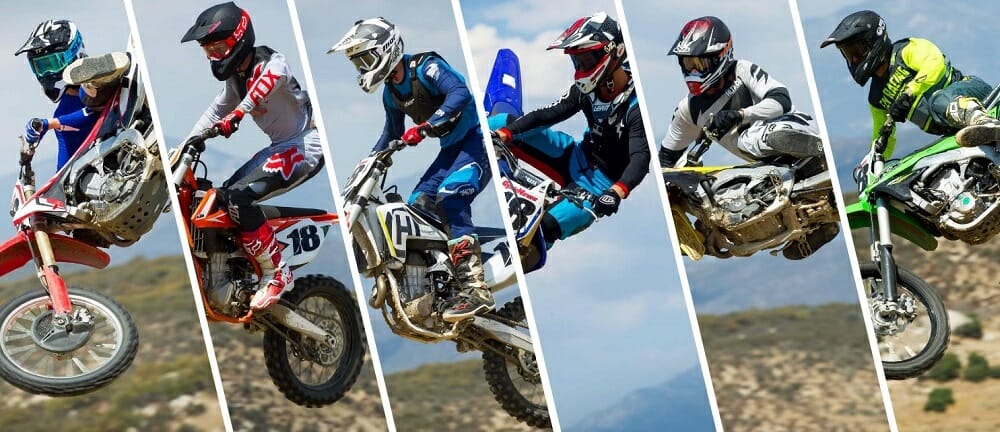
2018 450 Motocross Shootout
There isn’t a bad apple in the bunch; instead, each one is a modern technical marvel. But they are indeed different animals on the track, each one having their own distinct personality (even between the Husqvarna and KTM, two motorcycles that roll off the same production line in Austria). They all have the capability of getting to the checkered flag first, but there is always one bike that always does it a little better—perhaps a little easier, a little more consistently, and maybe even a little cheaper—than all the rest. To find out which motorcycle that is, we ride them, work on them, and live with them for weeks.
As usual, our group of tester riders was made up of very experienced and capable motocrossers of various ages, sizes, weights and talent, ranging from novice all the way up to pro. This year, we had the honor of having former motocross factory racer Brett Metcalf as a part of our testing staff.
Our shootout guideline is simple—leave them stock. All of the bikes here are ridden just as you would get them off your dealer’s showroom. We run the stock tires, suspension springs, handlebars, levers, grips, pipes, mufflers—everything is left stock, except for graphics that we install just to make them look a little prettier. (This year, D’cor Visuals accomplished that for us.) Our testers are only allowed to make adjustments that are made available to them from each bike. And all of the bikes were weighed with a full tank of gas on our own scale.

Click here to read this in the Cycle News Digital Edition Magazine.
PHOTOGRAPHY BY ADAM BOOTH
2018 450 Motocross Shootout
The Contestants

Honda CRF450R
Last year (2017) the Honda got a major overhaul, resulting in a faster, better handling and better-suspended motorcycle. For 2018, Honda refined it, which included giving it electric starting. Honda wanted to test the waters last year by offering electric starting as an option, now they know we want it permanently. Tada! The CRF450R also went back to spring forks, which it did last (2017) year.

Yamaha YZ450F
The ‘18 Yamaha YZ450F got a major redo, though the basic foundation is the same as before with its reversed cylinder head, elevated airbox and centralized fuel tank. When it comes to spring forks, Yamaha never wavered; staying true to its Kayaba SSS fork, while everyone else was experimenting with air forks. The 2018 YZ450F is thinner, and has a new engine-tuning App and electric starting.
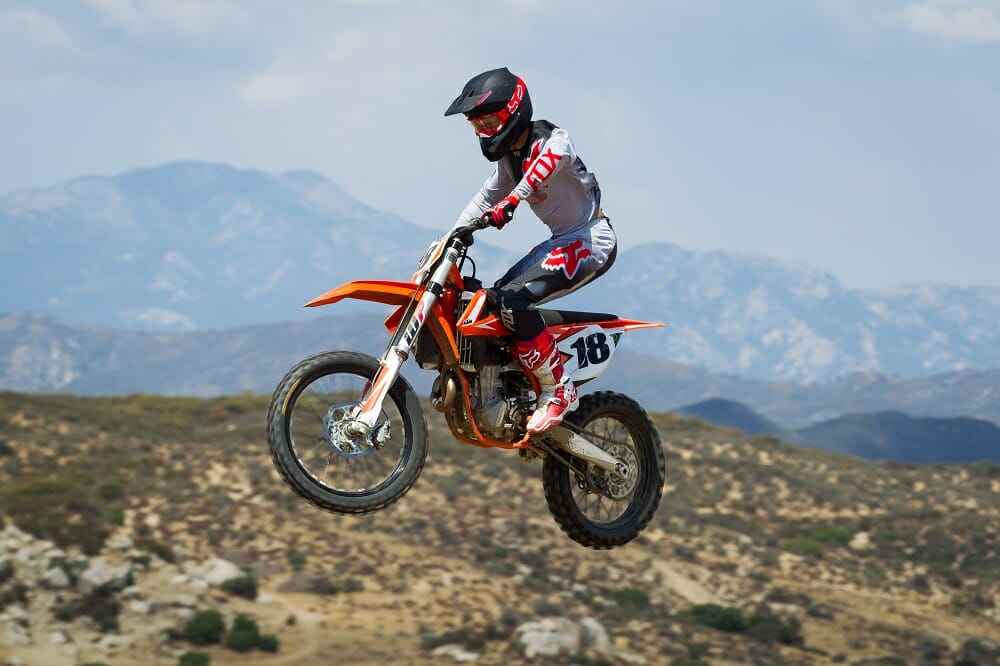
KTM 450 SX-F
The winner of last year’s shootout sees little changes for 2018 but it did get an orange frame—Yes!—and small suspension revisions. The KTM and its half brother (Husky) remains loyal to their WP AER 48 air forks, which is considered the best of the pneumatics these days. The KTM has a lot going for it, like electric starting, traction control and having the honor of being the lightest bike in the class.
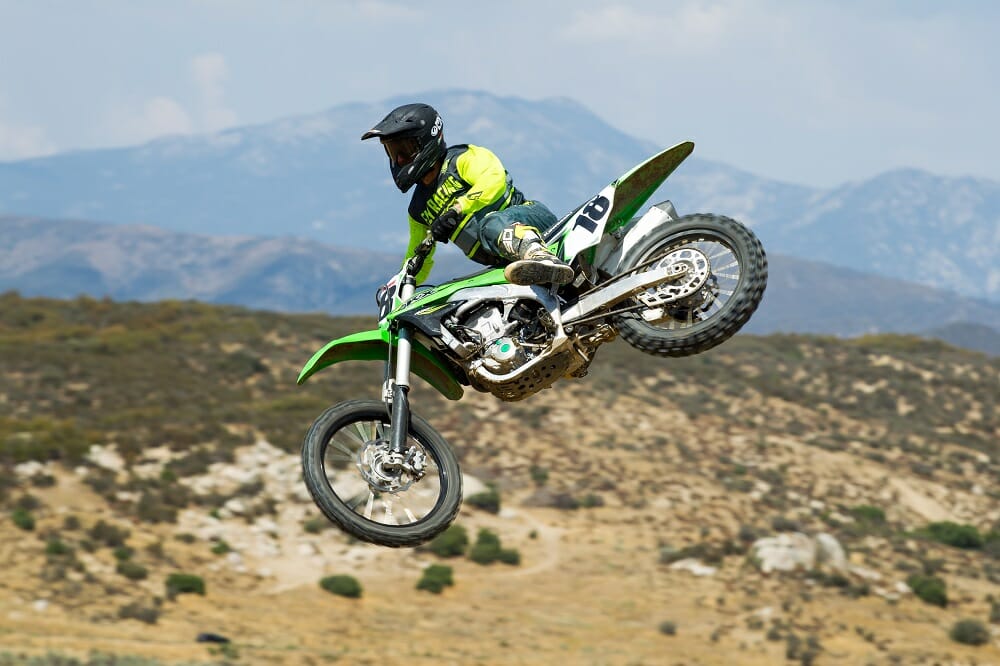
Kawasaki KX450F
The KX450F was the trickest and baddest bike in the class after going through a huge metamorphosis just two years ago (2016). But things happen quickly in MX and now it’s one of the “oldest” when it comes to updates. It has none in 2018 and saw only a few in ‘17. It still performs, though. It’s powerful, handles good and is the only bike here with adjustable footpegs. But you still got to kick it to start it.
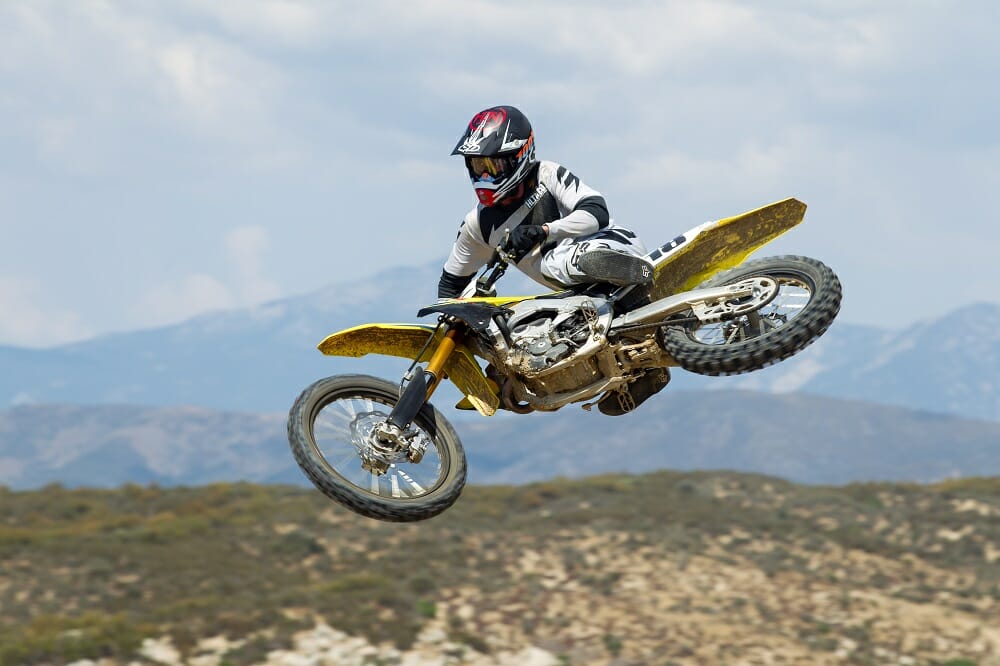
Suzuki RM-Z450
Despite its long-in-the-tooth styling, the RM-Z450 has been a solid performer over the years. But it now has a fresh look and a number of mechanical changes for 2018. It’s pretty much an all-new motorcycle with a new coil-spring fork, a high-tech shock and updated chassis. Unfortunately, it’s the heaviest bike of this group despite not having electric starting.

Husqvarna FC450
The Husky received the same suspension revisions as the KTM. On paper, these two bikes are very similar, separated by only the their airboxes, swingarms, plastic and mufflers. The Husky’s muffler is slightly more restrictive than the KTM’s, as is its airbox. Standout features are the same as the KTM’s: electric starting, traction control, WP AER Air fork, launch control and a hydraulically operated clutch.
2018 450 Motocross Shootout
6th Place
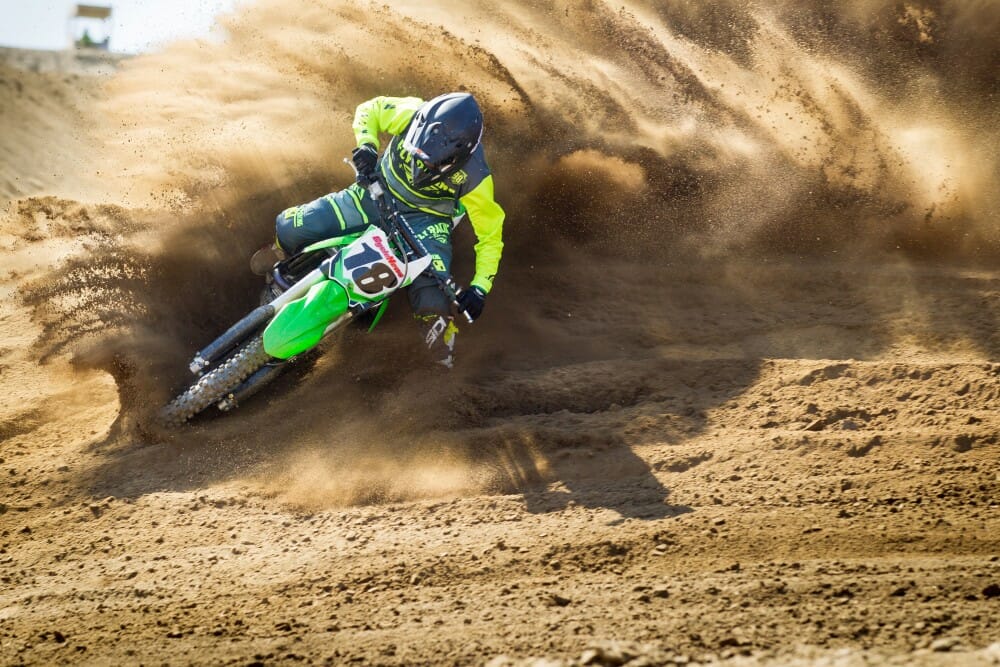
Kawasaki KX450F
What a difference just a few years makes. Not long ago the KX450F was fighting to be king and now it’s fighting just to stay out of the cellar. For the first time in many, many years (if ever!), the KX450F is pulling up the rear in one of our shootouts. Again, not because it’s a bad bike, but because the competition has stepped it up so much lately. Since the KX450F’s last significant update in 2016, all of the other bikes have experienced major overhauls, including the Honda, KTM and Husqvarna in 2017, and the Yamaha and Suzuki in 2018.
Don’t fret! The KX450F is still an awesome motorcycle, despite seeing little changes since 2016. Believe us when we say that this bike is still competitive—it very much is. It still has a potent engine that has a broad powerband and can pull each gear starting from just about any rpm. It’s a revver, too. Metcalfe felt that the KX450F’s engine is “strong but lacks low-end punch compared to some of the other bikes; up top, though, there are a lot of ponies and it just keeps pulling.”
In general, our testers liked the KX’s power—it’s the suspension they have issues with (mainly the fork). The KX’s Showa SFF-AIR TAC (Separate Function Fork, Triple Air Chamber) is noticeably inferior when you compare it back-to-back with the Honda and Suzuki’s new Showa spring fork, the Yamaha’s tried and true KYB SSS spring fork, and the KTM and Husqvarna’s WP AER air forks. “I just couldn’t find the sensitivity that I was looking for out of the KX’s fork,” said one tester. Metcalfe said that he wasn’t “thrilled” with the KX’s fork, either, and another tester flat out said they felt “horrible” no matter how much he adjusted them. He said that he eventually just gave up trying. Some of the other testers weren’t as critical of the KX’s fork but really didn’t have a lot of good things to say about them either.
Despite the fork, most of our testers thought that the KX was still a solid- and quick-handling machine that, as one tester put it, “felt pretty stable and planted most of the time.” The others generally agreed.
Most felt that the KX turned well, as long as there was a berm around. Flat turns, the KX’s front end felt lost as it hunted around for something to stick its front wheel in. Better tires would benefit the KX.
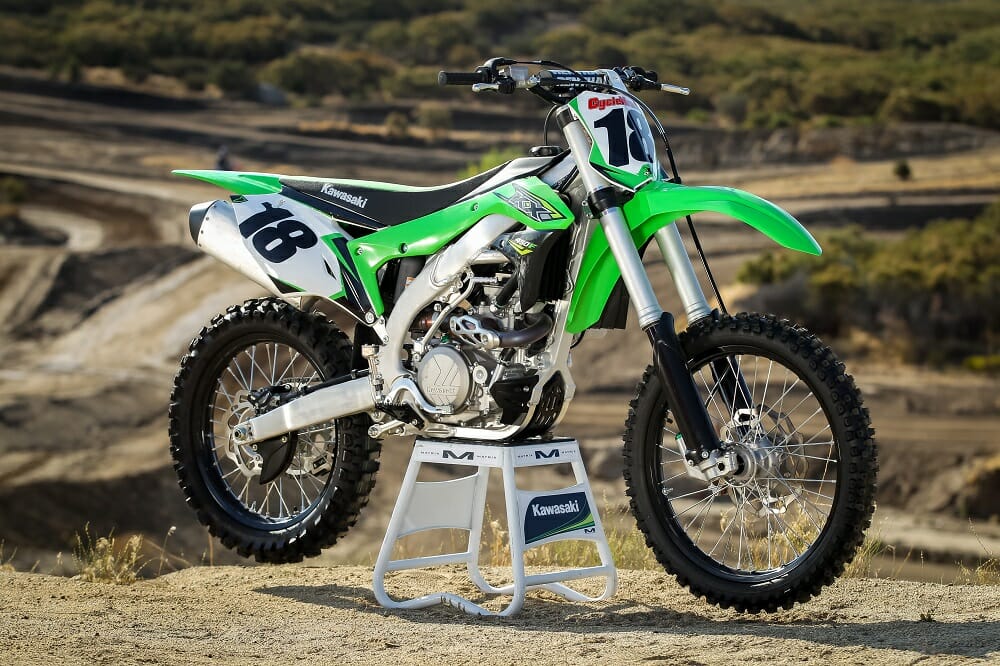
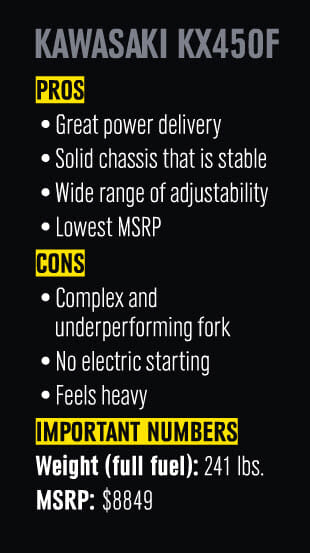 There are only two bikes—the KTM and Husqvarna—that are lighter than Kawasaki. The KX is six pounds lighter than the Yamaha, 10 pounds lighter than the Honda, and 11 pounds lighter than the Suzuki; yet, our testers said that it didn’t really feel lighter on the track. One flat out said that the KX felt the heaviest of the group; there are many factors for this—overall balance, weight bias, vibration, power characteristics, CG, ergos, you name it.
There are only two bikes—the KTM and Husqvarna—that are lighter than Kawasaki. The KX is six pounds lighter than the Yamaha, 10 pounds lighter than the Honda, and 11 pounds lighter than the Suzuki; yet, our testers said that it didn’t really feel lighter on the track. One flat out said that the KX felt the heaviest of the group; there are many factors for this—overall balance, weight bias, vibration, power characteristics, CG, ergos, you name it.
The KX has a lot of adjustability; you can fine-tune the position of the handlebars better than most, and it’s the only bike of the five with footpegs that you can adjust (they can be lowered five millimeters) but few (if any) of our testers actually took advantage of this feature. But it’s nice to know that you can, especially if you’re on the tall side. The KX has launch control (in fact, it was the first 450 to have it, now they all do), and adjustable engine mapping via quick-change couplers (which is, again, nothing new to the KX). For super-fine tuning, Kawasaki offers, as an accessory, its handheld KX FI Calibration Kit.
The KX is the only bike other than the Suzuki that relies on manual kick starting.
The bottom line is the KX450F is still a solid motocrosser, but the fact that it doesn’t have starting button and has an air fork (that just doesn’t perform nearly as well as the other forks do) would make us think twice about buying one, even if it is still an overall sound and competitive motorcycle on the track.
5th place
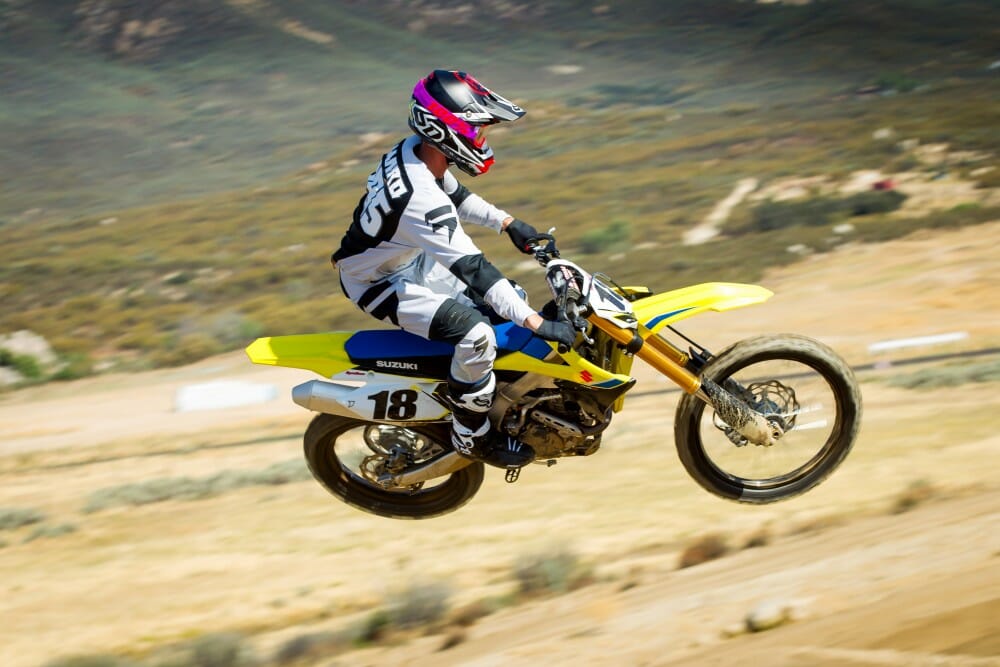
Suzuki RM-Z 450
Rating the all-new Suzuki near the tail end of our shootout just goes to show you how competitive—and good—these five bikes are. Without question, the 2018 Suzuki RM-Z450 is a much-improved motorcycle over its predecessor, and we like this bike a whole lot. It has a user-friendly engine, wonderful suspension, pinpoint handling and is still the clear leader when it comes to cornering (though the Honda, Husqvarna and KTM are getting close). But the buzz kill here is—it doesn’t have electric starting and it is the heaviest bike of the group. Okay, it might be only a pound heavier than the Honda (252 vs. 251) but the Honda has electric starting! And so does the KTM that is 16 pounds lighter than the Suzuki. These two strikes against the Suzuki weighed heavily on our test riders at the end of the day and played a major factor when it came time to rate these bikes.
The Suzuki’s suspension rated high with our testers, the faster riders wanted stiffer springs front and rear but mostly front. Still, everyone thought the Suzook’s spring fork is a big improvement over last year’s air fork, as is the RM-Z’s new BFRC shock, which does a great job soaking up the smaller bumps. Metcalfe said, “I thought the Suzuki handled great and the rear end handled the square-edge chop better than anything else.”
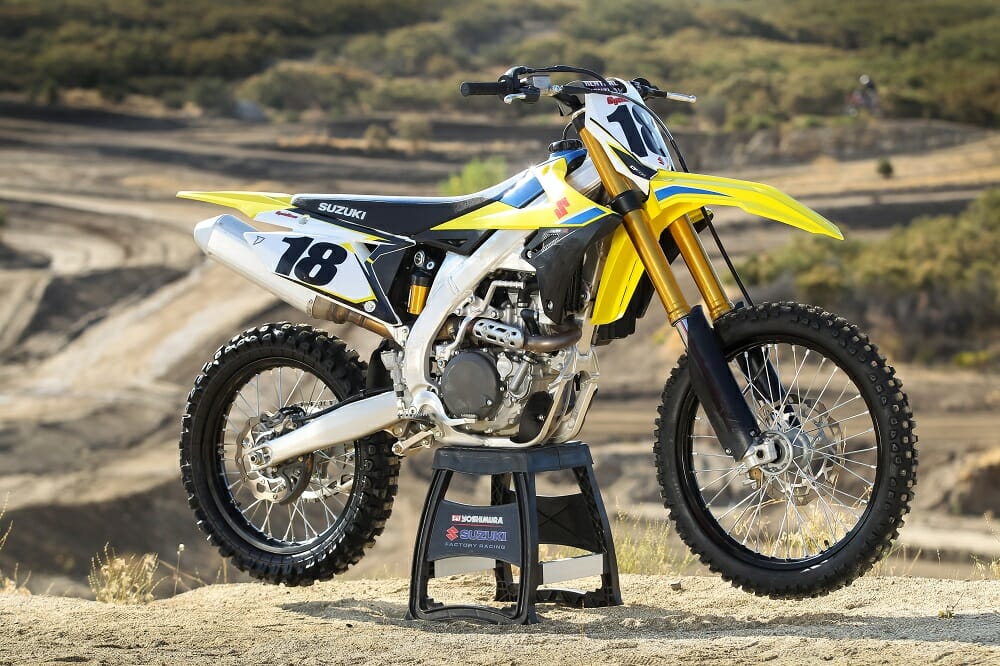
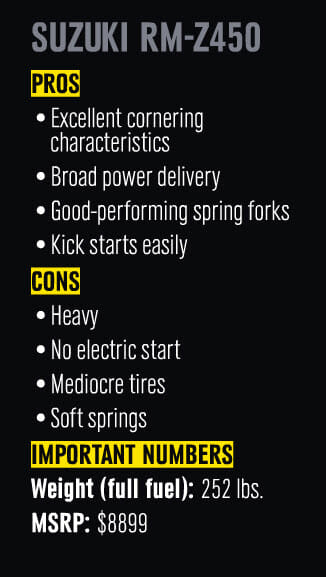 The RM-Z makes good power and is very controllable and even a little deceiving—it’s faster than it feels; as a result, some riders had the tendency to over-jump things while getting accustomed to the Suzuki’s super-smooth power delivery. Some even called the RM-Z’s engine “lazy” and even “slow” (but don’t worry, it’s not). Metcalfe said, “The engine accelerates really smoothly and pulls through the gears.”
The RM-Z makes good power and is very controllable and even a little deceiving—it’s faster than it feels; as a result, some riders had the tendency to over-jump things while getting accustomed to the Suzuki’s super-smooth power delivery. Some even called the RM-Z’s engine “lazy” and even “slow” (but don’t worry, it’s not). Metcalfe said, “The engine accelerates really smoothly and pulls through the gears.”
A few testers said they’d like to see a better way to change the RM-Z’s ignition mapping rather than its 10-year-old coupler system (i.e. they want Yamaha’s App tuner.)
Yes, the Suzuki still turns fantastic—tighter the turn the better. “Berm or no berm, the Suzuki turns great,” said one tester whose sentiments were also felt by most of our testers. Unfortunately for the Suzuki, other bikes, like the Honda, KTM and Husqvarna, have gained a lot of ground on the RM-Z in the turning department.
The RM-Z also has strong brakes; light controls and feels narrow between your legs. It’s easy to move around on and starts easily even if you do have to kick it. Most of our testers said the Suzuki would probably handle even better with different tires. They aren’t fans of the stock Bridgestone’s that come stock.
Overall, the RM-Z has all of the ingredients to win races but needs to go on a diet and get with the times by installing electric starting.
4th Place
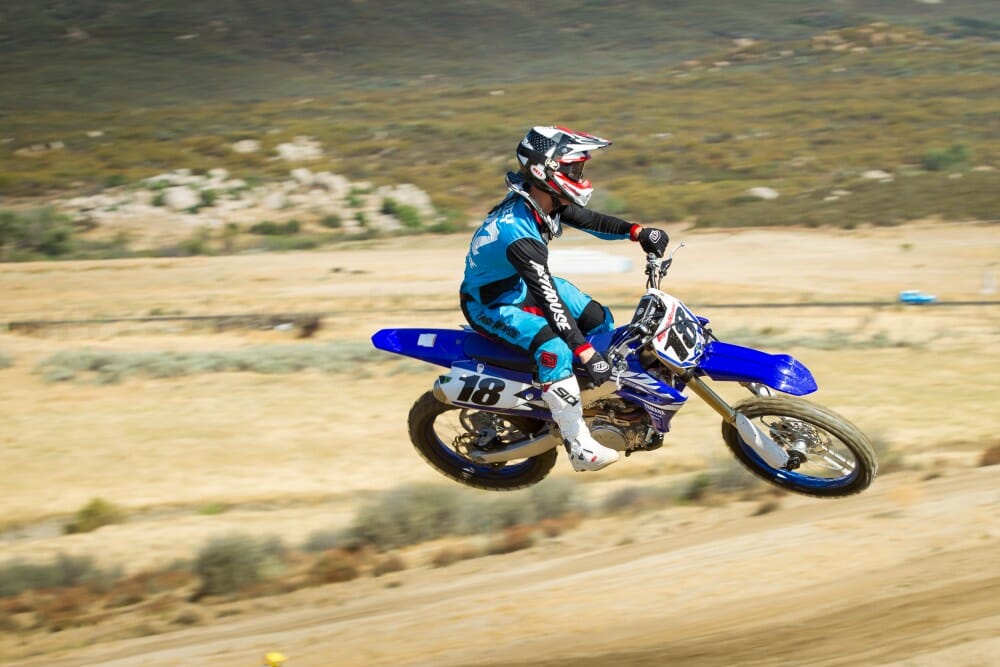
Yamaha YZ450F
Fourth place or not, the Yamaha YZ450F is still one of our favorites of the group, we just happen to like the Husky, KTM and Honda a little better. Not one tester placed the Yamaha on the top of their list, but it did get a couple of seconds, and a few thirds and fourths. Nothing worse than that.
The Yamaha is a lot of motorcycle. It has arguably the strongest engine (based on our seat-of-the-pants dyno), it’s just plain fast, it’s loud (really loud), and it even feels a little big between your legs. But what really stands out for us is its suspension—it’s the best, hands down.
Nothing beats the YZ’s fork and the only bike that rivals it in the back is the Suzuki. Put two and two together, and you simply have the elite suspension package. “The YZ has the best suspension right out of the box,” said one tester. “It has the best forks,” said another. “The YZ handled well without having to make any suspension changes,” said another. “In the suspension department, the Yamaha absolutely blew me away; I could attack the roughest sections of the track and the bike was un-phased,” said another. Even Metcalfe said: “The KYB spring forks are by far the best in the production bike market and the rear worked well the rougher the track got.” Need we say more about the YZ’s suspension?
The YZ’s engine is also impressive. It has tons of power everywhere while still being relatively easy to control, though some thought the motor was too explosive in stock configuration. “The Yamaha’s engine is still a benchmark for power,” said Metcalfe.

 Because of the unique airbox location (just behind the steering head), you easily hear the air being sucked into the intake system, which annoys some of our testers; that, combined with a muffler that doesn’t muffle, the YZ played havoc with our tester’s ears. “It’s loud and it doesn’t sound good,” said one tester.
Because of the unique airbox location (just behind the steering head), you easily hear the air being sucked into the intake system, which annoys some of our testers; that, combined with a muffler that doesn’t muffle, the YZ played havoc with our tester’s ears. “It’s loud and it doesn’t sound good,” said one tester.
We love the YZ’s new engine-tuning App that allows you to make mapping adjustments right from your smartphone. It’s simple and fun to use, and it’s free! It makes handheld tuners and couplers seem obsolete.
Even with a spring fork and electric starting, Yamaha managed to keep weight in check at 247 pounds. It’s not the lightest bike on the scale nor is it the heaviest, but it’s pretty much right in the middle, and it feels fairly light and agile on the track.
Even though Yamaha addressed these two issues, the YZ still feels wide and doesn’t turn as proficiently as the Honda, KTM, Husky and Suzuki. Yamaha did make the bike narrower between your legs, but you can still feel the radiator shrouds with your knees when you stick out your legs in the turns. That really bugs some riders, and the Yamaha just doesn’t feel quite as sharp or as precise, or offer as good feedback, in the turns as the Suzuki, KTM, Husky and Honda. As you know—races are won in the turns.
When it comes to details, the YZ has powerful brakes, light clutch pull with excellent modulation, a soft (but not too soft) seat, comes fitted with well-liked Dunlop MX3S tires and when it comes to reliability, the Yamaha has a stellar reputation. And the YZ is a looker, especially with those blue rims!
3rd Place
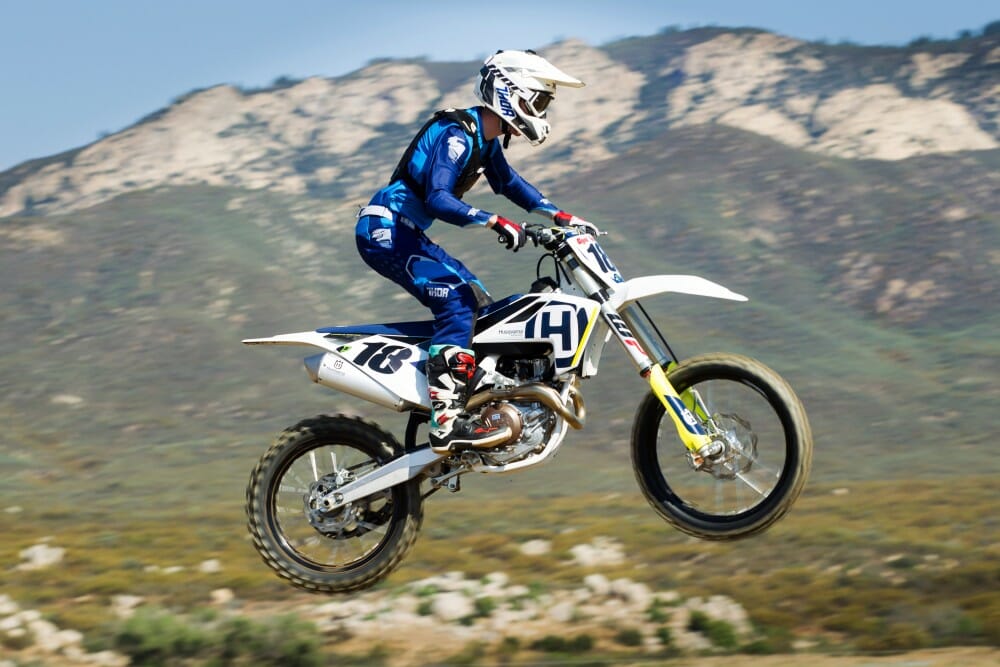
Husqvarna FC 450
The Husqvarna was all over the map when it came to our test riders’ rankings. It got one first-place vote, one fifth-place vote and a little bit of everything else in between. But when all was said and done, everyone was able to sleep comfortably at night knowing that we had voted the Husky third in our final ranking.
All agreed that the Husqvarna has a lot to offer. It’s super light (just a pound heavier than the KTM at 237 pounds), has traction control, electric starting, a hydraulically operated clutch that has great feel and a light pull, launch control (but is clunky to operate), handlebar-adjustable mapping, top-of-the-line brakes, and an air fork that actually works pretty well. (The Husky looks cool, too.)
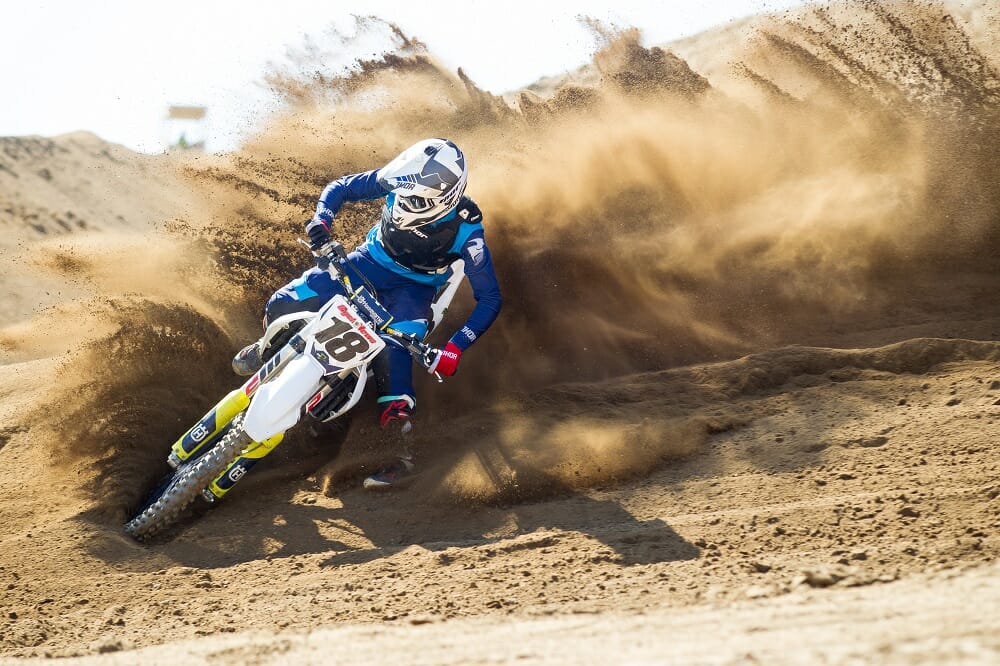
There isn’t much not to like about the Husky, except for its price—it’s the most expensive bike in the shootout at $9699, which is $100 more than its KTM brother, and significantly more than any of the Japanese bikes. MSRP is $500 more than the YZ, $550 more than the CRF, $800 more than the RM-Z, and $850 more than the KX. Is it worth the extra bucks over the bikes it finished ahead of? That’s actually a tough call. It depends on which bikes you’re comparing it to and your financial situation; probably, yes, if money flow isn’t a huge problem for you, but if things are a bit tight, probably not. Based on performance alone, however, the Husky deserves to be on the podium.
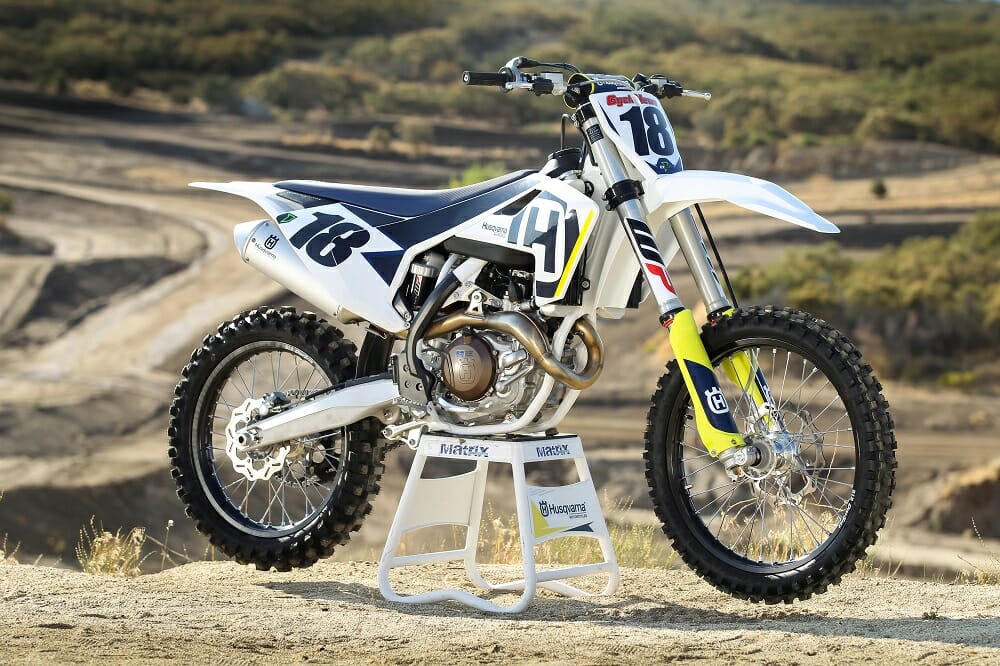
On the track, the Husky’s performance is anything but cheap. It has a fantastic engine that is powerful yet controllable; power delivery is spot-on. And the Husky’s traction control is no gimmick—it really does work. When the track dries out and becomes slick, just hit the switch and whack the throttle till your heart’s content! (Same holds true for the KTM.) You’ll feel the difference coming out of the turns. It softens up the hit just enough to help keep things in line and the back tire hooking up. It reduces the stress load on the rider.
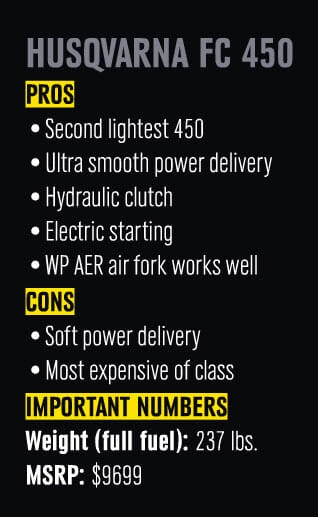 There is lot to be said for the Husky’s steel chassis. Husky (and KTM, of course) is a firm believer in steel frames and we get it. Steel frames tend to have a more compliant feel on rough tracks with a lot of square edges than aluminum-framed bikes; aluminum might be lighter, but Husky (and KTM) has still found a way to keep weight down—way down.
There is lot to be said for the Husky’s steel chassis. Husky (and KTM, of course) is a firm believer in steel frames and we get it. Steel frames tend to have a more compliant feel on rough tracks with a lot of square edges than aluminum-framed bikes; aluminum might be lighter, but Husky (and KTM) has still found a way to keep weight down—way down.
Separating the Husky from the KTM (and vise versa) is difficult for the obvious reason—they are essentially the same motorcycle. But not exact. Even the not-so-sensitive rider can feel the seemingly minute mechanical differences between the two bikes on the track. Both the Husky and KTM have powerful engines, though our test riders all agreed that the Husky’s power came on a little smoother, less explosive, than the KTM’s. Some liked that, while others preferred the KTM’s more exciting power delivery. “The Husqvarna is just more controlled and easier to use. It’s fast as heck still.”
“Like the KTM, the Husky is an awesome package,” said Metcalfe. “It has a slightly different feel in the chassis [compared to the KTM] because of the airbox and subframe. It is splitting hairs between the KTM and Husqvarna.”
In last year’s shootout, the KTM finished a tick ahead of the Husky, and since both bikes are pretty much the same as last year, we have no reason to change their order this year.
2nd Place
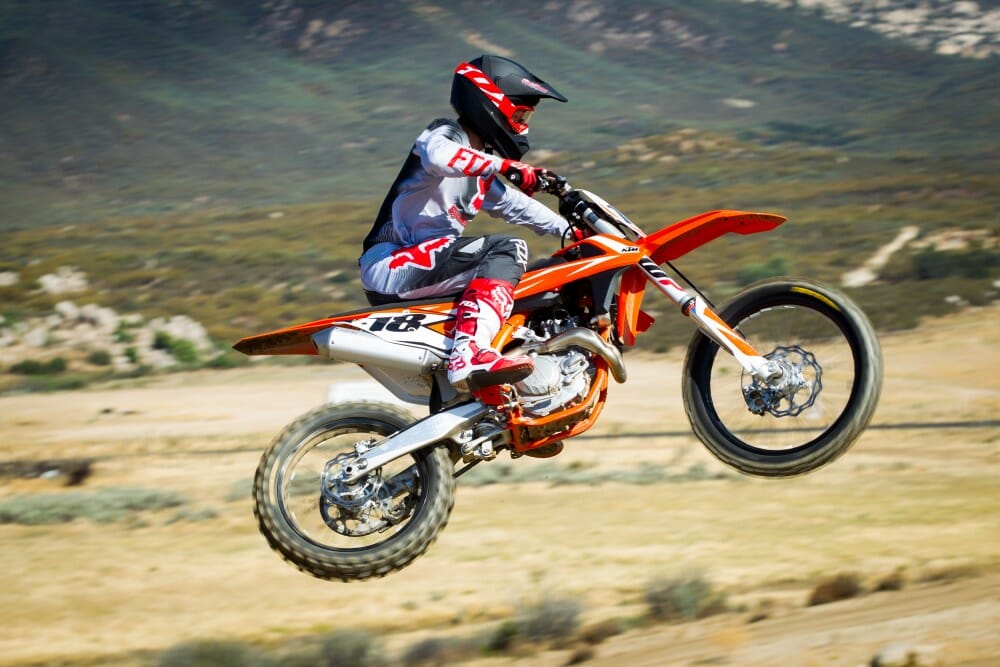
KTM 450 SX-F
The KTM was the bike with the target on its back going into this shootout. It edged out its Husqvarna brother for the win in 2017, while the all-new Honda was right there with them in third. This year, the lowest ranking the KTM received from our test riders was third; in fact, it got three third-, five second- and one first-place vote. Not bad at all. It’s safe to say that all of our test riders liked the KTM.
They liked the KTM for a lot of reasons, too, for one, the engine. “The KTM has great, snappy, power that seems to never stop pulling in the top-end,” said one tester. “It has plenty of useable power and will rev,” said another. “The KTM is an awesome machine,” said Metcalf, adding, “what I enjoy most is the powerband—it’s broad and strong all the way through the range.” And another tester said, “It feels like the fastest motor but with a smooth power delivery, making the bike very rideable.”

And when you tack on traction control, you have a super potent engine that anyone can use. “The traction control is a cool feature to have if it’s dry and conditions are slick, it really works,” said one tester. “The traction control option on the KTM and Husky is a great feature and rates highest on the reasons why I would purchase one of these bikes,” said another tester.
The KTM’s handlebar-mounted engine-tuning control is also a nice feature. And they gave the KTM’s E-button a double thumbs up.
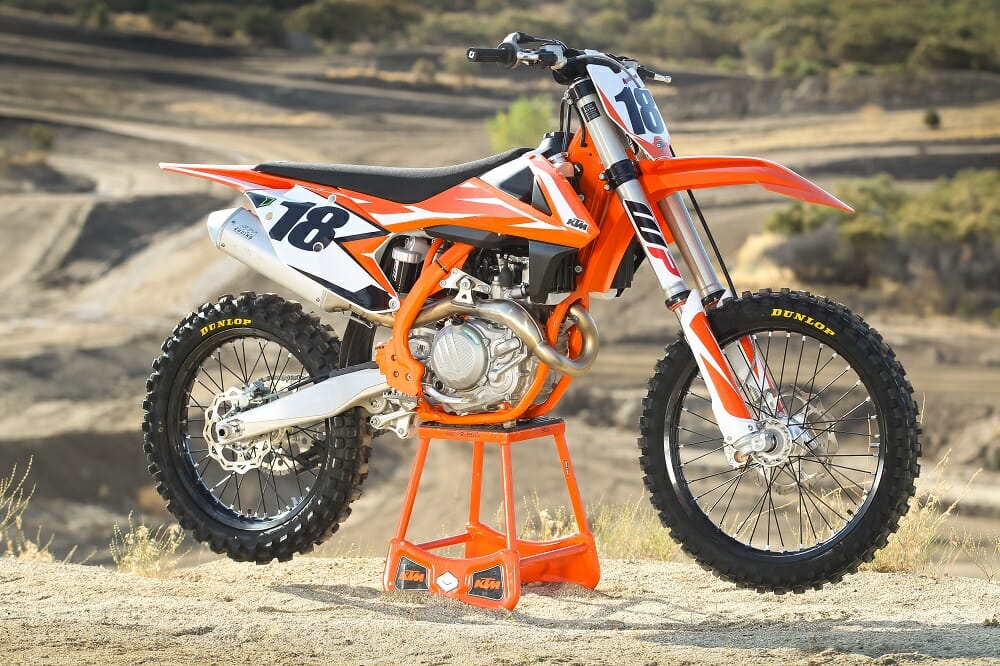
Another reason why our testers like the KTM is the way it rails the corners. The KTM gets in and out of the turns quickly and effortlessly, berm or no berm, and they also like the way the KTM handles and how light it feels on the track.
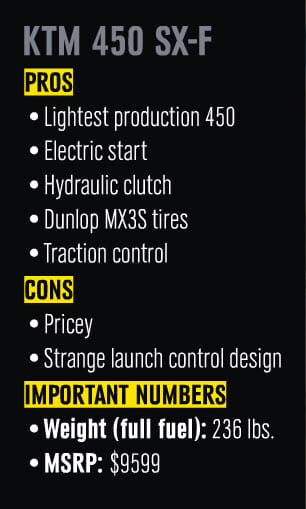 “The KTM is light and nimble and doesn’t require a lot of effort to make it do what you want, and I also appreciate the additional bump compliance that the steel frame provides; all of these things help make the KTM easier to ride for a longer period of time.”
“The KTM is light and nimble and doesn’t require a lot of effort to make it do what you want, and I also appreciate the additional bump compliance that the steel frame provides; all of these things help make the KTM easier to ride for a longer period of time.”
The only thing that might’ve prevented the KTM from making the top of the leaderboard is suspension, more specifically the fork. While the WP AER 48 fork might be the best production pneumatic fork out there right now, it’s still an air fork and our testers seem to be over that fad, especially now that they’ve been re-introduced to coil-spring forks on two of the four Japanese bikes (the YZ never jumped on the air fork bandwagon). Even though the WPs are very good, they still don’t offer the feel our testers want. “While the AER fork is the best functioning air fork on the market in my opinion, it still leaves a little to be desired in the small bump compliance department,” said one tester, adding, “this was the only thing that kept the KTM from being on the top of my list.” Metcalfe said, “The air fork is a slight downer for me. Yes, it’s the best production air fork I’ve used, but I still don’t get the feel I’m looking for and often feel like the front searches around over bumps.” And another tester said, “The KTM would likely be the winning bike for me if I felt more comfortable with the forks.”
Like the Husky, the KTM boast many top-of-the-line components, like Brembo brakes, Dunlop MX3S tires, and ODI grips, which make the KTM’s (and Husky’s) fat price tag a little easier to swallow.
1st Place
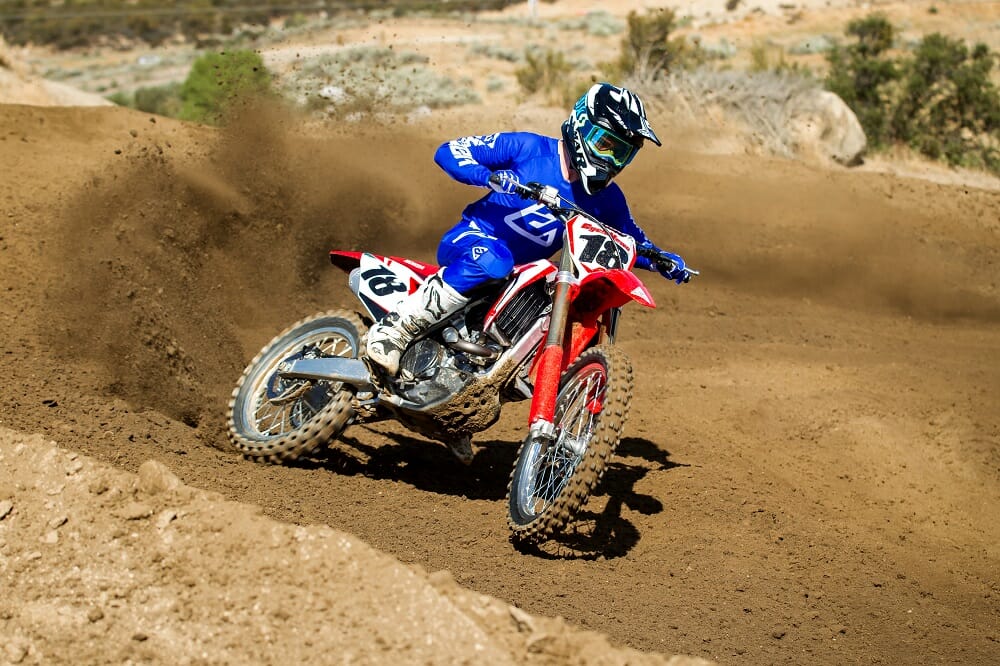
Honda CRF450R
As we already mentioned, the Honda nearly won our 450 shootout last year, edged out by the KTM and Husqvarna. Overly soft suspension, an overall somewhat stiff chassis feel and electric starting not being standard were some of the culprits that kept it from standing on the top step of the podium. Well, Honda addressed these issues and, ta-da, the CRF450R is our 2018 450 shootout winner.
After the dust had settled, six out of our nine test riders placed the Honda at the top of their lists.
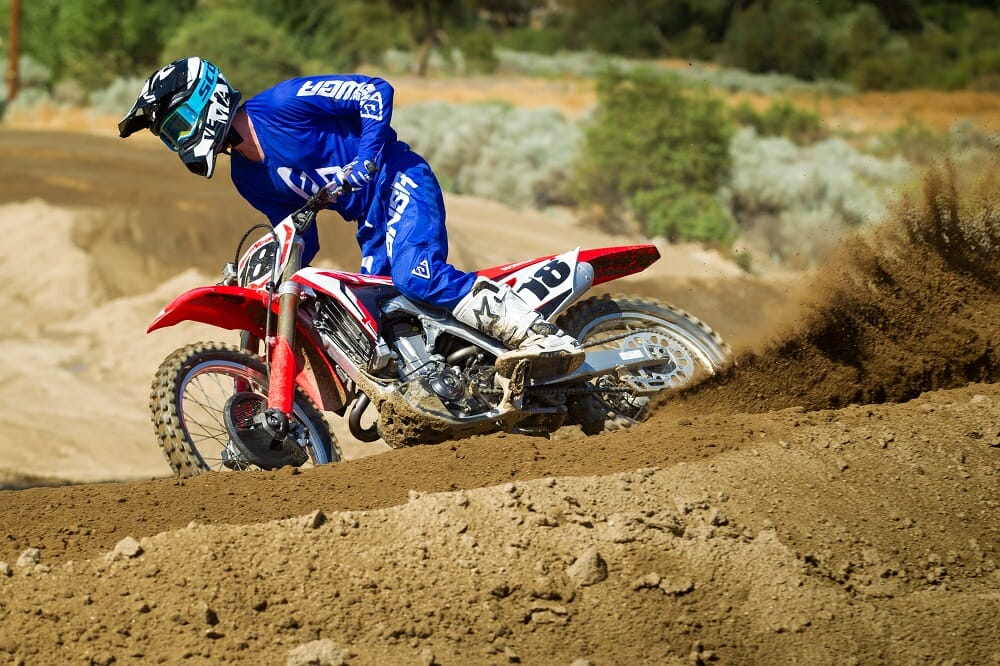
One of those testers pretty much summed things up when he said: “I felt the Honda had the best overall handling, as well as having really good power. It wasn’t too harsh off the bottom, while, at the same time, having good mid-to-upper power—it was also one of the best revving motors. Plus, it had solid suspension that handled big hits, along with the small chop, real well. The chassis had good balance and felt light, nimble and stable. And now it has electric starting!”

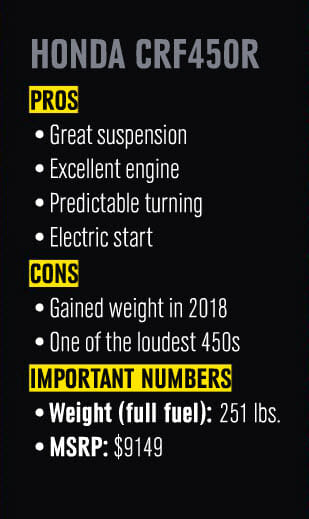 Metcalfe was one of those who rated it in first place: “The Honda turned great on tight sections, very nimble and direct, with steering control,” he said “It had enough stability on high-speed sections to be comfortable and a motor that rips off the low end. The broad power off low-end through midrange was awesome and extremely responsive. If you like to short shift though your gearbox, you will love this package. Spring forks are a huge plus, too, although settings were still a little soft for me. Ergonomics allowed me to sit right up front through tight ruts and stay locked in, while allowing freedom to move back over the bike with jumps.”
Metcalfe was one of those who rated it in first place: “The Honda turned great on tight sections, very nimble and direct, with steering control,” he said “It had enough stability on high-speed sections to be comfortable and a motor that rips off the low end. The broad power off low-end through midrange was awesome and extremely responsive. If you like to short shift though your gearbox, you will love this package. Spring forks are a huge plus, too, although settings were still a little soft for me. Ergonomics allowed me to sit right up front through tight ruts and stay locked in, while allowing freedom to move back over the bike with jumps.”
In a nutshell, the Honda gets the gold medal for being the best all-around package while coming in with a comparatively reasonable price tag. (It’s not the “cheapest” bike of the group but it’s far from being the most expensive.) The Honda does everything well without having any glaring faults, other than it being a little on the heavy side, but the Honda hides its weight extremely well on the track because it’s so well balanced, and turns so easily, and you can at least justify the added weight by getting a much-improved coil-spring fork and electric starting.
The Honda also gets high marks for its Dunlop MX3S tires, good grips, handlebar-adjustable mapping, powerful brakes, and excellent fit and finish. We’re still not big fans of the dual mufflers, however, yet Honda believes it’s a big reason why the CRF450R handles so well. If that’s the case, then we guess we can continue living with them.
Congratulations Honda for being our well-deserved 2018 450MX Shootout winner. CN